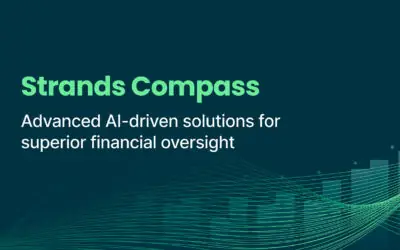According to a survey by O’Reilly, cloud adoption has been rising across industries at a steady rate, with over 90% of organizations using cloud computing technology. The growth in adoption rate was evident from the 2020 survey that reported 88% organizations using the cloud in the world. But among industries, there is one that is taking a bit longer to adopt the cloud concept holistically: banking.
Future banking trends and the cloud
Predicting what future banking will look like in the long run is complex, as several factors will come into play. Among technological advancements, economic conditions and regulatory changes, however, there are a few aspects to keep an eye on:
- Regulatory changes, such as for data privacy and financial inclusion, may shape the future banking approaches. Banks will need to adapt to this to remain compliant and competitive.
- Increasing competition from non-traditional players: traditional banks may face more competition from neobanks, also referred to as “challenger banks”, and other fintech firms.
- Focus on customer experience: in an increasingly competitive market, future banking institutions will need to focus on a seamless and personalized experience for customers to maximize growth. This will involve elevating a range of digital services, such as mobile banking, online financial planning tools, with state of the art personalization.
- Growing use of technology: banks will continue to adopt new technologies, such as artificial intelligence and blockchain, to improve services and operations. A common factor among all these future trends is cloud banking.
Facing evolving consumer expectations, emerging technologies and new business models, banks know by now that they need to strategize for a digital future. An important indicator in this shifting landscape is cloud computing, which can be used in banking to deliver seamless financial services to customers. As cloud computing involves hosting applications and services on remote servers, accessible over the internet, cloud banking brings several benefits. The most striking one? That not relying on local hardware and software makes service offerings smoother for financial institutions.
What is cloud banking
Cloud computing is increasingly being used by financial services companies, including banks, insurance companies, and investment firms. Some examples of the cloud for financial services include:
- Online banking and mobile banking: cloud computing allows banks to host their online and mobile banking platforms on remote servers, which can be accessed by customers from any device with an internet connection. This can make it easier for banks to provide a wide range of services to their customers, including account management, fund transfers, and bill payments.
- Financial planning and analysis tools: financial services companies may use cloud computing to provide customers with tools for budgeting, investing, and tracking their financial performance. these tools can be accessed online or through mobile apps, and may use data analytics and artificial intelligence to provide personalized recommendations.
- Payment processing: cloud computing can be used to process and manage transactions, including credit card payments, online payments, and mobile payments. This can be particularly useful for businesses that need to process large volumes of transactions.
- Data management and analytics: financial services companies may use cloud computing to store, process, and analyze large amounts of data, including customer data, financial data, and market data. This can helps make better informed decisions and improve their operations.
Why should banks kickstart the adoption?
Cloud banking has an endless list of advantages that have the power to gradually revolutionize future banking trends:
- Better data security, thanks to the frequently updated software
- Lower infrastructure costs, as any change in the IT infrastructure gets better manageable
- Greater operational efficiency, with better risk management and flexibility
- Better control over apps, as they are part of the SaaS model
- Steadier business continuity, with greater levels of fault tolerance and disaster recovery
- Green IT, as transferring the banking services on cloud lowers the energy consumption and carbon footprint
In addition to the benefits for financial institutions, cloud banking can also be convenient for customers, as it allows them to access their financial accounts and services from any device with an internet connection. This can be particularly useful for customers who are always on the go or who do not have easy access to a physical bank branch.
Strands’ cloud banking solutions
In digital and cloud banking, everything is about handling data. As we have seen, the volumes are growing rapidly, and the trend will go upwards. That’s why, at Strands, we deploy cloud banking solutions: we want to help banks and financial institutions scale. And the great news is, Strands SaaS solution requires less work for to be implemented and integrated with digital banking, compared to its on-premise software.
Interested in how we can support your bank or financial institution with our Saas banking solutions? Let us help you scale!



